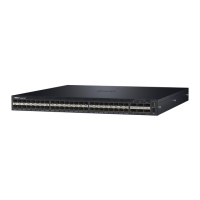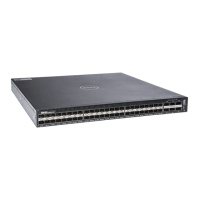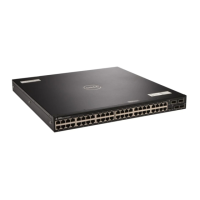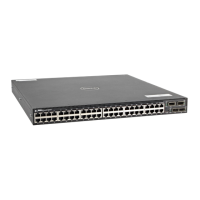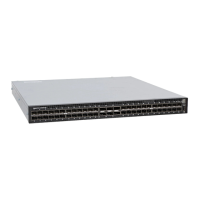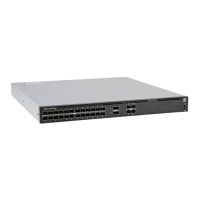DHCP
DHCP requests are not forwarded across VRF instances. The DHCP client and server must be on the same
VRF instance.
VRF Configuration
The VRF configuration tasks are:
1 Enabling VRF in Configuration Mode
2 Creating a Non-Default VRF
3 Assign an Interface to a VRF
You can also:
• View VRF Instance Information
• Connect an OSPF Process to a VRF Instance
• Configure VRRP on a VRF
Loading VRF CAM
• Load CAM memory for the VRF feature.
CONFIGURATION
feature vrf
After you load VRF CAM, CLI parameters that allow you to configure non-default VRFs are made available on
the system.
Creating a Non-Default VRF Instance
VRF is enabled by default on the switch and supports up to 64 VRF instances: 1 to 63 and the default VRF (0).
• Create a non-default VRF instance by specifying a name and VRF ID number, and enter VRF configuration
mode.
CONFIGURATION
ip vrf vrf-name vrf-id
The VRF ID range is from 1 to 63. 0 is the default VRF ID.
Virtual Routing and Forwarding (VRF) 1190
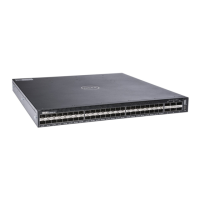
